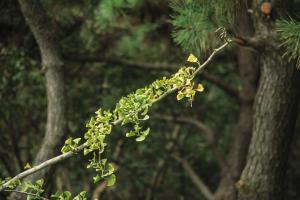Do Grubs Eat Tomato Plants?
Grubs are the larvae of various types of beetles, including Japanese beetles, June beetles, and chafers. They can cause significant damage to lawns, gardens, and agricultural crops, including tomato plants. In this article, we will investigate whether grubs eat tomato plants and what you can do to prevent and control grub damage in your garden.
What are Grubs?
Grubs are soft-bodied, C-shaped larvae that hatch from eggs laid in the soil by adult beetles. They feed on the roots of plants, which can be especially damaging to young or newly transplanted seedlings. Grubs can cause wilting, yellowing, and stunted growth of plants, and in severe cases can even kill plants.
Do Grubs Eat Tomato Plants?
Yes, grubs can eat tomato plants. They feed on the roots, which can disrupt water and nutrient uptake by the plant. This can lead to wilting, yellowing, and stunted growth of the plant. In severe cases, the damage can be so extensive that the plant dies.
How to Prevent and Control Grub Damage to Tomato Plants
1. Monitor your soil for beetle activity: If you notice an influx of adult beetles in your garden, it is likely that they have laid eggs in the soil. This is the best time to start monitoring for grub activity. Look for small, white grubs in the soil around the base of your tomato plants.
2. Use nematodes: Nematodes are microscopic worms that are a natural predator to grubs. They can be found at most garden centers and can be applied to the soil around the base of your tomato plants. Follow the instructions on the package for best results.
3. Apply milky spore: Milky spore is a naturally occurring bacterium that specifically targets Japanese beetle grubs. It can be found at most garden centers and can be applied to your soil in the spring or fall. It is important to note that milky spore takes time to establish, so it may take a few seasons to see results.
4. Use insecticides: If you have a severe infestation of grubs, you may need to use an insecticide to control the damage. Insecticides can be found at most garden centers and should be used according to the instructions on the label.
Conclusion
Grubs can be a significant problem for gardeners, and they can certainly eat tomato plants. However, there are several ways to prevent and control grub damage, including monitoring for beetle activity, using nematodes or milky spore, and using insecticides when necessary. With proper prevention and control measures, you can successfully protect your tomato plants from grubs and other pests.

 how many times do yo...
how many times do yo... how many planted tre...
how many planted tre... how many pine trees ...
how many pine trees ... how many pecan trees...
how many pecan trees... how many plants comp...
how many plants comp... how many plants can ...
how many plants can ... how many plants and ...
how many plants and ... how many pepper plan...
how many pepper plan...

































